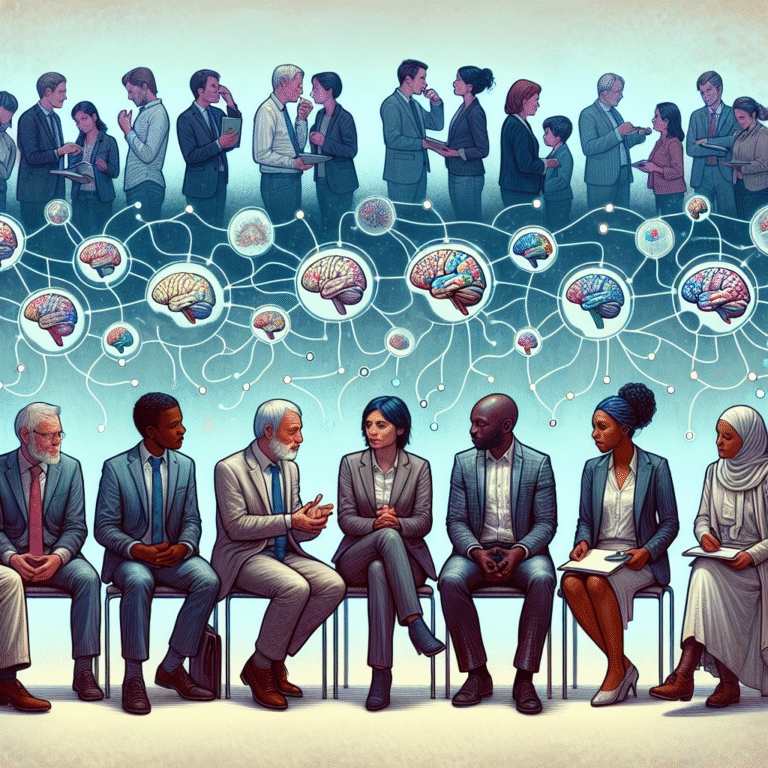
Introduction
In a world that thrives on connectivity, the phrase "The Digital Divide: How Technology Influences Social Development" has never been more pertinent. As technology weaves itself into the very fabric of daily life, the disparities in access to digital resources have profound implications for social development. With over half the global population still lacking adequate internet access, the digital divide isn’t just a tech issue—it’s a vital social challenge that shapes education, economic opportunities, and healthcare outcomes.
As we explore the intricate relationship between technology and social development, we will uncover the layers of disparity that persist in digital access and consider how we can work towards a more inclusive future.
Understanding the Digital Divide
What is the Digital Divide?
The term "digital divide" refers to the gap between those who have easy access to the internet and modern information and communication technologies (ICTs) and those who do not. This divide can be influenced by various factors, including geographical location, socioeconomic status, educational background, and age. Understanding these elements is crucial as they fundamentally shape how technology influences social development.
Factors Contributing to the Digital Divide
Various factors contribute to the persistence of the digital divide. Here are a few key aspects:
Economic Disparities: In many regions, the cost of internet access remains prohibitive, especially for lower-income families.
Geographical Limitations: Rural areas often lack the infrastructure necessary for high-speed internet.
Disability and Age: Older adults and individuals with disabilities may face barriers to accessing digital resources.
- Education: A lack of digital literacy can discourage individuals from utilizing available technologies effectively.
Understanding these contributors helps frame the discussion around how technology can be leveraged to mitigate these disparities and promote social development.
The Impact of Technology on Social Development
Education: Bridging Learning Gaps
The advent of digital learning platforms has transformed the educational landscape. However, the digital divide has created significant disparities in access to quality education.
Case Study: In rural India, the implementation of mobile learning devices, like the "Smart Class" initiative, has allowed students greater access to educational content. This initiative illustrates the potential for technology to revolutionize classrooms in remote areas and empower students to enhance their learning experiences.
Analysis: Such initiatives foster inclusivity and provide children from disadvantaged backgrounds with opportunities that would otherwise be unavailable, emphasizing how technology influences social development by narrowing educational gaps.
Economic Empowerment: Opportunities for All
Access to technology can be a powerful catalyst for economic development. Small businesses can leverage digital platforms to reach broader markets, and individuals can access online learning opportunities.
Case Study: In Africa, mobile banking services like M-Pesa have empowered millions of unbanked individuals by providing them with tools for financial independence. The accessibility of these services is a defining factor in reducing poverty and enhancing economic participation.
Analysis: M-Pesa is a prime example of how technology influences social development by fostering economic inclusion, demonstrating that digital access can lead to substantial improvements in individuals’ livelihoods.
Healthcare: A New Era of Accessibility
Telemedicine is revolutionizing healthcare delivery, particularly in underserved regions. However, the benefits of telehealth services are unevenly distributed due to the digital divide.
Case Study: In rural Japan, the “Smart Health City” initiative has utilized telemedicine to connect patients with specialists remotely, improving healthcare access in regions where hospitals are scarce.
Analysis: This case underscores the importance of addressing the digital divide in healthcare settings, as telemedicine can significantly enhance healthcare outcomes, provided that barriers to access are minimized.
Bridging the Divide: Strategies for Action
Government Initiatives
Governments play a critical role in bridging the digital divide. Policies that promote internet access, such as subsidies for low-income families and investments in infrastructure, can significantly impact social development.
Table 1: Government Initiatives Around the World
| Country | Initiative | Impact |
|---|---|---|
| India | Digital India Mission | Aim to transform India into a digitally empowered society and knowledge economy. |
| Brazil | National Broadband Plan | Increase internet access to low-income communities. |
| United States | FCC’s Lifeline Program | Provides discounts on phone service for low-income consumers. |
Community Empowerment
Community organizations are often at the frontlines of combating the digital divide. By providing education and resources, they can empower individuals to utilize technology effectively.
Case Study: The “Tech Goes Home” initiative in Boston focuses on training families in digital literacy and providing them with low-cost computers and internet access.
Analysis: Empowering communities through initiatives like this demonstrates how grassroots movements can play a vital role in fostering social development, ensuring that technology benefits every segment of society.
Private Sector Engagement
The private sector also has a crucial role to play. By investing in local communities and offering resources that bridge the digital gap, businesses can create a more equitable landscape.
Case Study: Google’s Project Loon aimed to provide internet access to remote areas through high-altitude balloons.
Analysis: Innovative approaches like this highlight the importance of collaboration between tech companies and community initiatives as they strive to connect underserved populations.
Conclusion: Inspiring a Tech-Savvy Future
The exploration of "The Digital Divide: How Technology Influences Social Development" reveals a multifaceted issue that demands attention on multiple fronts. The disparities in access to technology are not just numbers on a chart; they represent real lives and untapped potential.
To bridge this divide, it is essential that governments, communities, and private sectors work collaboratively to create accessible, affordable digital options. The pathway to social development lies in the equitable distribution of technology and education, empowering every individual to thrive in a digital age.
Let us take actionable steps today to ensure that technology serves as a bridge and not a barrier.
FAQs
1. What is the digital divide?
The digital divide refers to the gap between individuals who have access to modern information and communication technology and those who do not due to various disparities like economic status, geography, and education.
2. How does the digital divide affect education?
Limited access to technology can prevent students from benefiting from online learning resources, contributing to educational inequality.
3. What are some initiatives to bridge the digital divide?
There are numerous initiatives, such as government programs offering subsidies for internet access and community organizations providing digital literacy training.
4. How can telemedicine help overcome barriers in healthcare?
Telemedicine connects patients with healthcare providers remotely, improving access to medical services, especially in underserved areas.
5. How can individuals contribute to reducing the digital divide?
Individuals can volunteer in community initiatives focused on digital literacy, donate devices to those in need, or advocate for policies that promote equitable access to technology.
This journey through "The Digital Divide: How Technology Influences Social Development" underscores that while challenges persist, opportunities for positive change are abundant. Together, we can work towards a future where access to technology is universal and empowers social advancement for all.

















